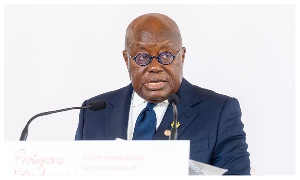The facial recognition feature is also being used to capture the biometric data of applicants for the compilation of the new voters register, the Electoral Commission has said.
The Commission, in a statement copied to the Ghana News Agency, in Accra, said the exercise was capturing both the fingerprints and faces of applicants.
Reacting to an article on social media, which it said cast doubt over the use of the feature, said the writer lacked understanding of the technology being deployed.
The Commission, it said, had deployed the Facial Recognition Technology in the registration application, while the software and hardware being used had been selected to ensure that the pictures captured met the ICAO requirements.
The registration exercise, it said, had recorded instances where identical twins with unique fingerprints had been flagged as duplicates by the Registration Software.
“If there was no Facial Recognition feature, this would not be possible, "it said.
"Another way to confirm that the Facial Recognition Technology has been deployed is that applicants who are registered as 'Face Only Applicants' can have their registration records retrieved for updates simply by taking their pictures. That is Facial Recognition at work.”
Applicants would, therefore, be verified using their fingerprints and/or faces.
“For the benefit of the general public, facial recognition is not solely a function of the hardware equipment that is employed," the statement emphasised.
"It is used with the facial recognition software that drives the process. “Specialised 3D Hardware is NOT required for facial recognition".
The exercise, which began on June 30, and will end on August 6, is in its third phase.
It is taking place at more than 33,000 registration centres under a cluster system arrangement where registration takes six days at each centre.
More than 4.5 million applicants have been registered out of the targeted 15 million voters.
General News of Saturday, 18 July 2020
Source: GNA

















